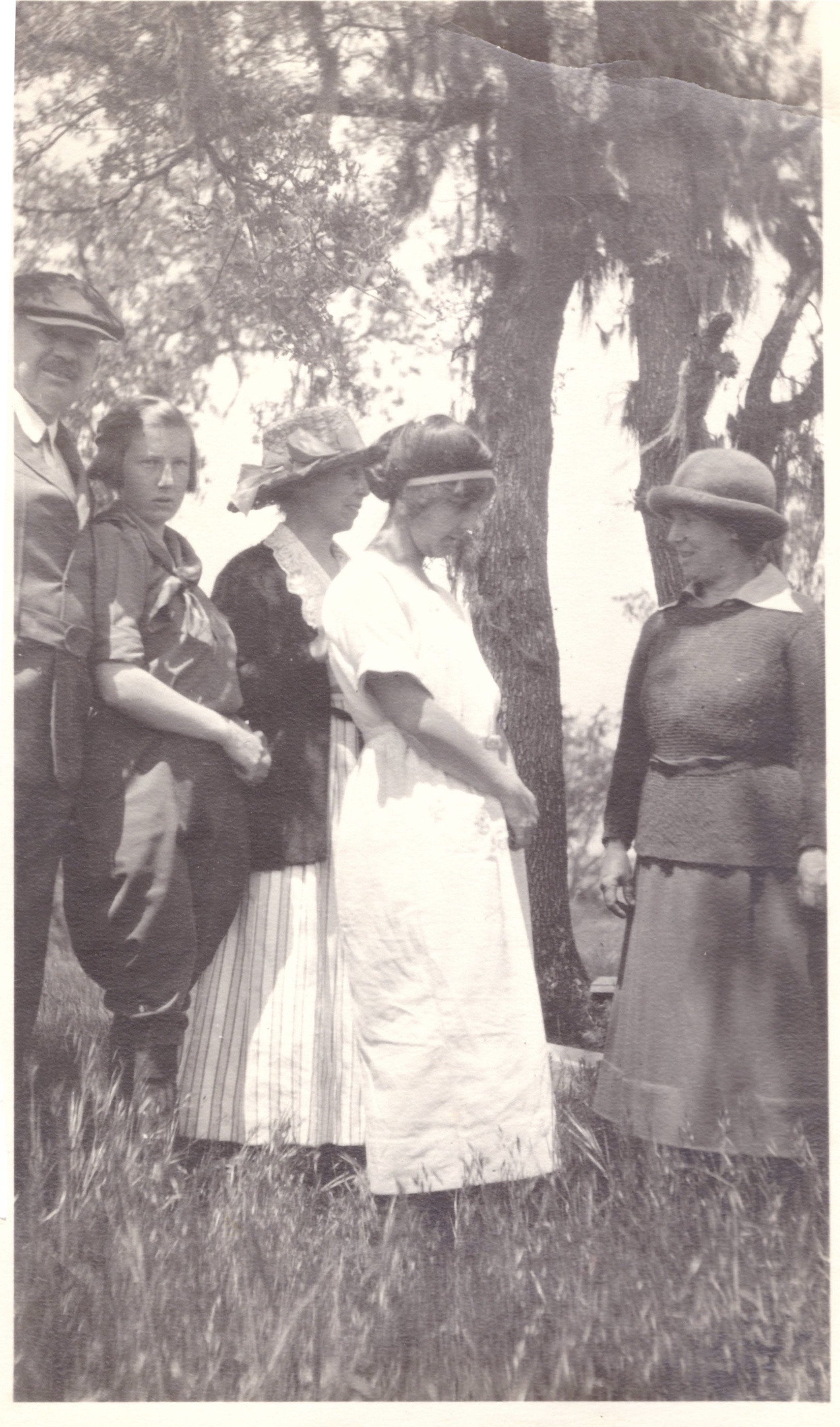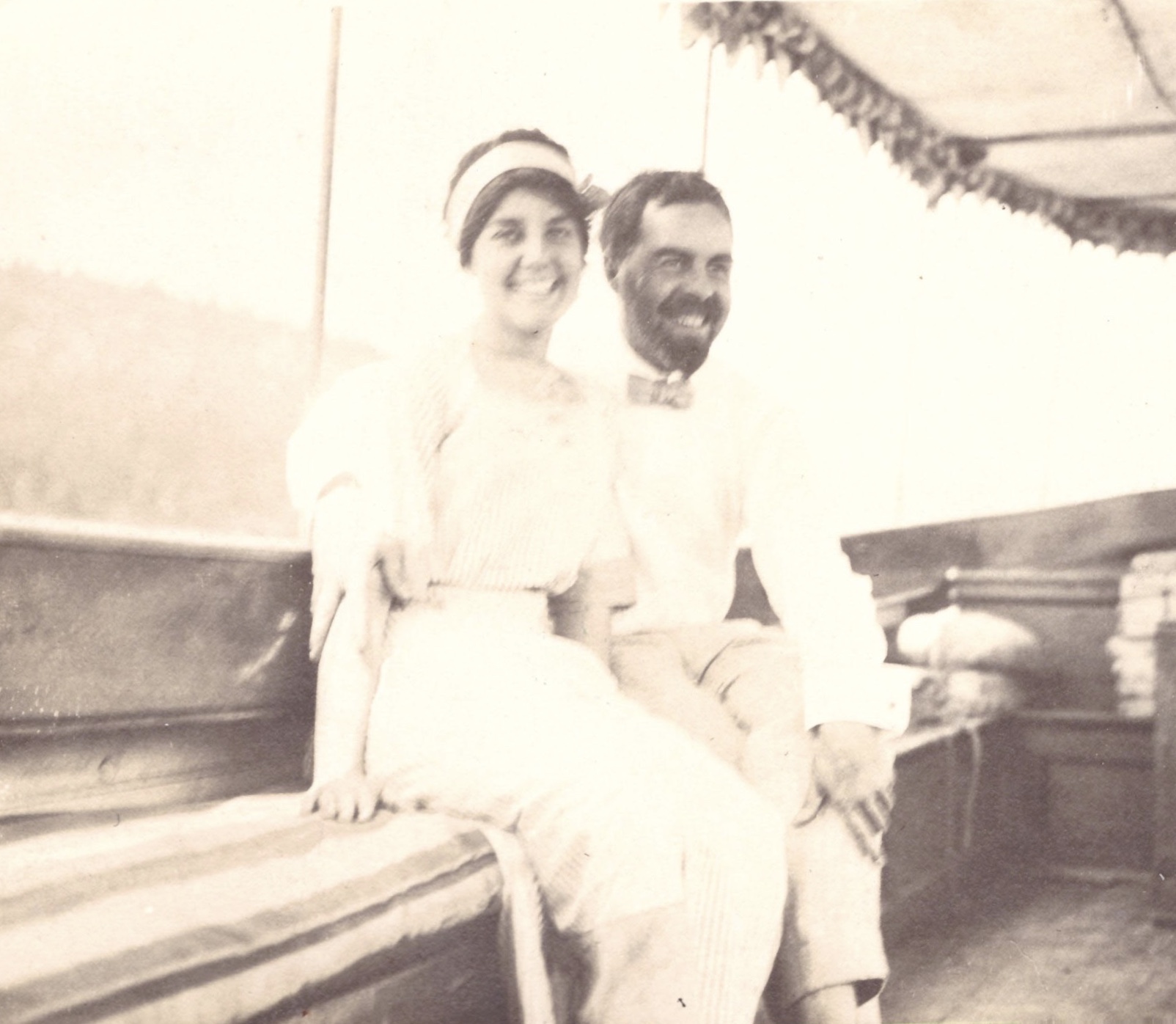A Quarantine Discovery
A Quarantine Discovery
Written by Kimberly Long with the assistance of OWA member Lou Kustin and his friend Cinny Shaffer
One of our OWA members, Lou Kustin, suggested the idea for this newsletter article after a friend reached out to him to learn more about the San Juan River. Lou’s friend, Cinny Lewis Shaffer, while spending much more time than usual inside of her home due to the spread of the novel coronavirus decided to go through a box of old papers and letters given to her when her father, Richard Lewis, passed several years ago. Those papers were given to Richard by his mother, Mary Lewis, upon her passing in 1988. The box contains many letters written between Richard and his mother when he was a young man living far away. Cinny is enjoying reading and learning more about her grandmother and family members during her quarantine. In that box of papers, she found a delightful surprise - a typed story of a San Juan River trip.
Mary Lewis was born Mary Hinckley Sheldon in 1890. She was raised in Cambridge, Massachusetts as the daughter of a Harvard professor. For two years she attended Radcliffe College, then the female “sister school” to the all-male Harvard, until she married a Harvard graduate who was teaching at Massachusetts Institute of Technology (MIT)
and moved with him to California. If you do a web search for Mary, you will not find much, perhaps a footnote in an article about her husband mentioning her name as his wife or survivor.  Mary was married to Gilbert Newton Lewis (b.1875-d.1946), a world renowned physical chemist and Dean of the College of Chemistry at University of California at Berkeley for 34 years. A biographical memoir of Gilbert N. Lewis provides the following excerpt from a spoken memorial of Lewis by C.E. Gibson “The electron theory of chemical valence, the advance of chemical thermodynamics, the separation of isotopes which made possible the use of the deuteron in the artificial transmutation of the elements, the unravelling of the complex phenomena of the adsorption, fluorescence and phosphorescence of the organic dyes are among the achievements which will ever be associated with his name” (Hildebrand, p. 224). Gilbert N. Lewis was clearly a fascinating man, and if so inclined, see the resources below to read more about this important figure in chemistry. His story includes some controversy and intrigue. However, today’s story is not about Gilbert Lewis, it is about Mary Lewis, who as a widow in her sixties sometime in the 1950s decided it would be an adventure to go on a float trip down the San Juan River. We are fortunate enough to have the opportunity to read her words, her story of that trip.
Mary was married to Gilbert Newton Lewis (b.1875-d.1946), a world renowned physical chemist and Dean of the College of Chemistry at University of California at Berkeley for 34 years. A biographical memoir of Gilbert N. Lewis provides the following excerpt from a spoken memorial of Lewis by C.E. Gibson “The electron theory of chemical valence, the advance of chemical thermodynamics, the separation of isotopes which made possible the use of the deuteron in the artificial transmutation of the elements, the unravelling of the complex phenomena of the adsorption, fluorescence and phosphorescence of the organic dyes are among the achievements which will ever be associated with his name” (Hildebrand, p. 224). Gilbert N. Lewis was clearly a fascinating man, and if so inclined, see the resources below to read more about this important figure in chemistry. His story includes some controversy and intrigue. However, today’s story is not about Gilbert Lewis, it is about Mary Lewis, who as a widow in her sixties sometime in the 1950s decided it would be an adventure to go on a float trip down the San Juan River. We are fortunate enough to have the opportunity to read her words, her story of that trip.
https://mail.oregonwhitewater.org/newsletter/2020/april-2020/trip-down-san-juanMary’s granddaughter, Cinny, describes Mary as having been an interesting and obviously quite intelligent woman. She did not finish her studies at Radcliffe, taking a year to live in China with her mother and moving to California as
a professor’s wife in 1912. She homeschooled three children, Richard (Cinny’s father), Margery, and Edward, who all grew to be learned, successful adults. Mary took classes on a variety of topics and was known to be an expert on wild mushrooms and an avid birder. As you read Mary’s tale on the river, you will see she also possessed strong knowledge of and an interest in geology. In the 1950s Mary lived in Inverness, California and “wintered” in Tucson, Arizona. It is believed that there, in Arizona, someone suggested the San Juan trip to her. Cinny is not quite sure when this trip occurred. It would have happened before 1963, when Glen Canyon Dam created Lake Powell, flooding the canyons Mary describes in the final days of her trip and significantly changing the experience on the San Juan and Colorado to date. There are different sides to that story as well, also interesting reading if you are looking for entertainment during quarantine. The trip Mary describes, 10 days from Mexican Hat to Lee’s Ferry, is no longer possible and the river levels on the San Juan that today’s floaters experience are not the same as before the dam. So sit back and enjoy Mary Lewis’ tale of her float, from a passenger’s perspective, on the San Juan river sometime in the 1950s.

